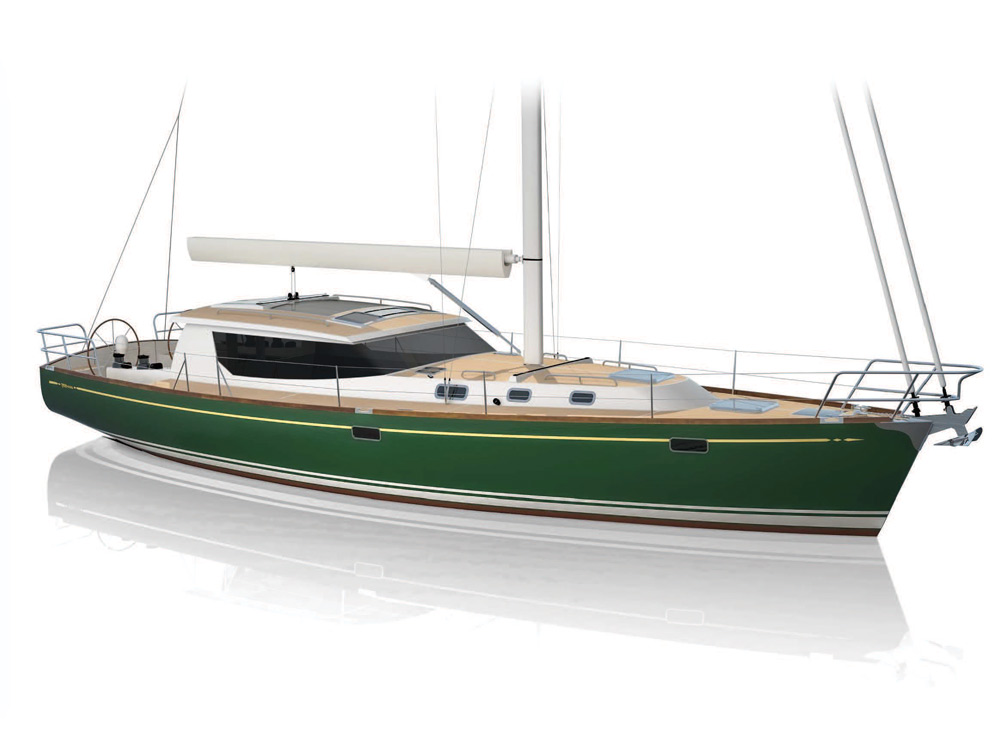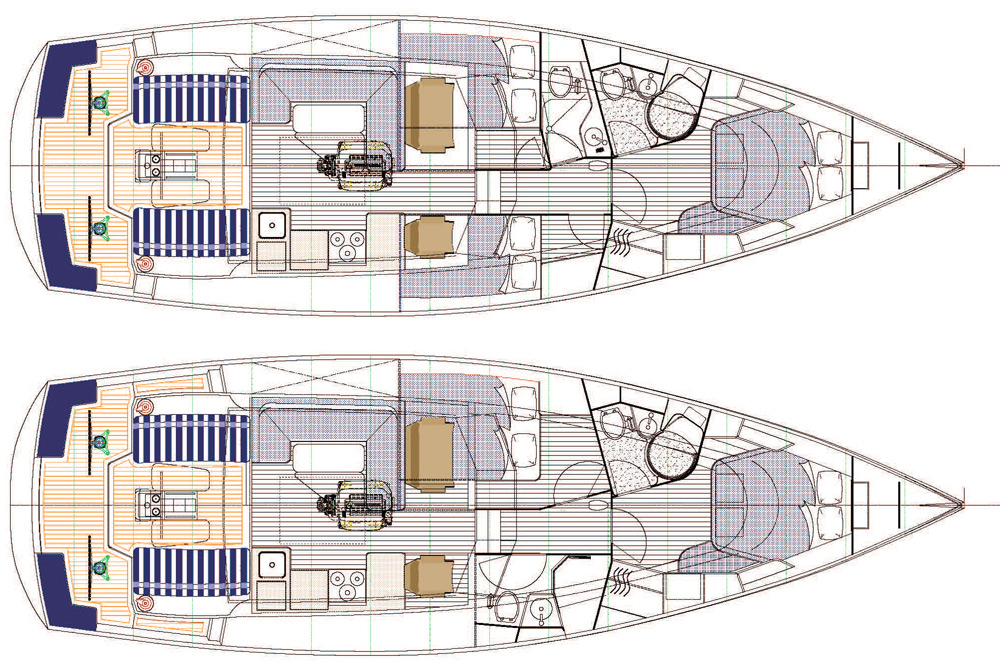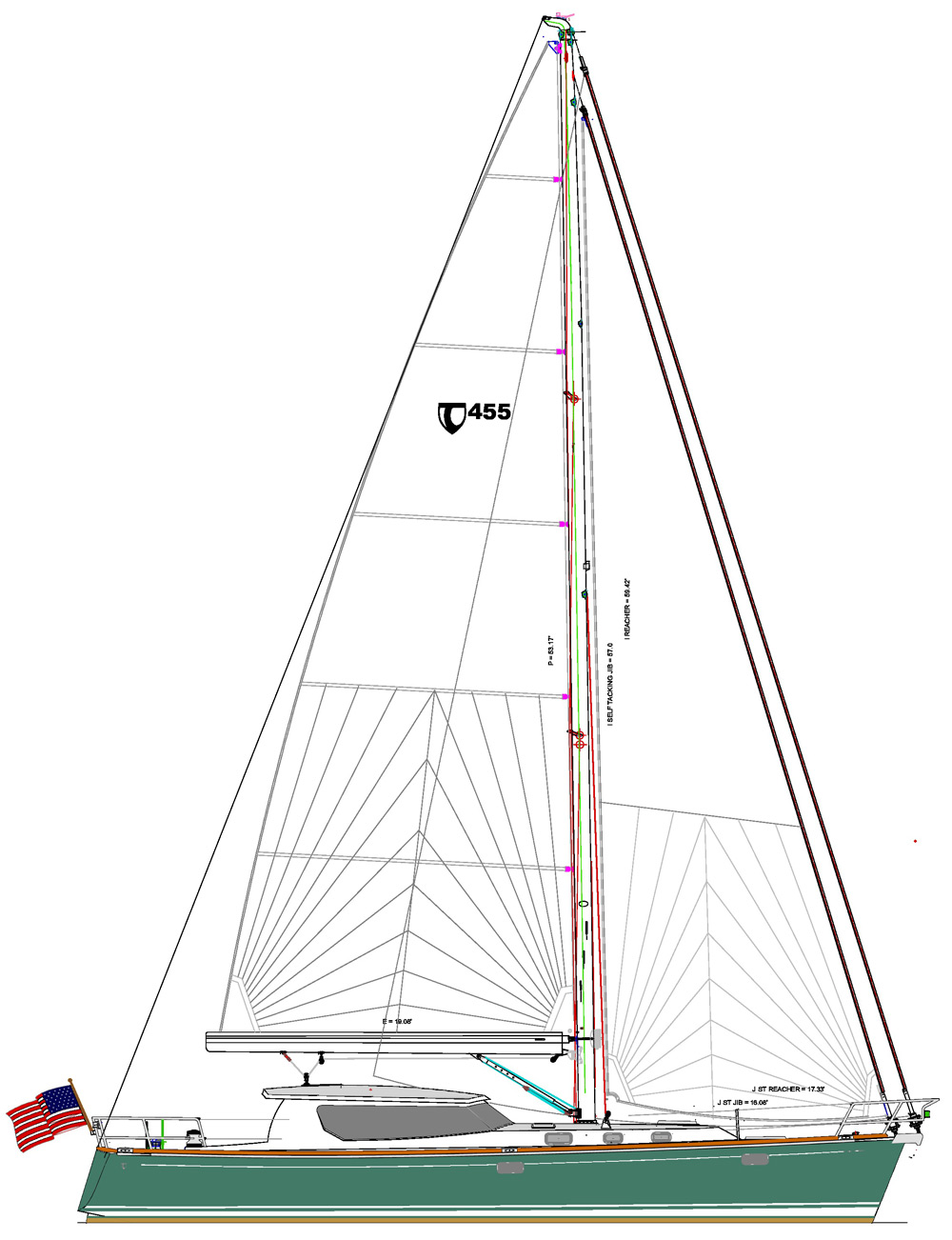Tartan 455
An American-built pilothouse cruiser keeps you out of the rain
I can’t recall seeing a Tim Jackett design I did not admire. Tim’s eye captures class proportions and shapes while insuring that performance does not take a back set to aesthetics. It’s simple. It’s what we all want—a great looking boat that is fast and well behaved.
Tim put his eye to work on this new 44-footer that offers a lot to the cruising family. You could call it a raised saloon configuration, but given that it offers a pilot station with inside steering I’d be inclined to call it a pilothouse configuration. “A rose by any other name.” All that matters is that it works without screaming “compromise!” Think of it as a delicate balancing act.

There is a long, shallow skeg starting about station 6.5 and going aft that I suspect is to give the boat good directional stability. The rudder is a large spade. Draft with the standard beavertail fin and bulb is 6 feet 6 inches but I see two other keel planforms on the drawing leading me to think that there are some shoal draft options.
The D/L using Tartan’s lightship displacement is 194. The L/B is 3.23. The prismatic coefficient is .53. If you want to go “full geek” the moment to trim one inch is 3,356 foot pounds and the pounds per inch immersion is 1,648. Now you have some homework.
The stern is beamy but not anywhere near what we see on most current production boats today. This will be a shapely and pretty hull.
There is a two-stateroom layout and a three-stateroom layout available. If you go with the three stateroom layout you get stacked single berths to starboard forward of the main cabin. There are two heads with the forward “owner’s head” having a large shower stall. The guest head is tighter but it’s very adequate. Now lose the third sleeping cabin and that space is used for a large guest head with shower stall. I think it’s actually bigger than the owner’s head.
Moving the guest head to starboard opens up the port-side guest sleeping cabin with enough extra volume for a wider double berth and a large hanging locker. The owner’s cabin features a centerline double berth, a seat at the foot of the bed and a plethora of lockers. The main cabin has the pilot station forward to port with a seat to starboard in case the driver gets lonely. Aft of that there is a large dinette to port and galley to starboard. This is a perfect layout for the Pacific Northwest when the winter weather is still warm enough to keep cruising but rather wet due to our persistent rain. Nothing like sitting in a raised main cabin looking out the windows while the rain beats down and the dog looks at you begging to be taken ashore.
One complaint I hear often is, “I won’t be able to see around that pilothouse.” Well, yes you will, depending on where you choose to sit. If you sit on what I think are sunken forward cockpit seats no, you won’t see forward unless you look though the house. That becomes a reflex on a boat like this. The house is not a brick wall. The pilothouse is 85% glass. You can look through it. Or, move aft to what looks like a raised seating position aft of port and starboard wheels. Now you can look over, around and through the pilothouse. You get used to it quickly.
I think I see a step in the deck adjacent to the aft end of the pilothouse. This also helps with visibility from the wheel position aft. No, you don’t have the broad side decks of the Solaris, but the side deck width you lose is volume added to the inside of the pilothouse. Call it a “compromise” if you like but it makes sense. The designer has to do all this by feel. There are no formulae for balancing interior volumes.
The bow overhang allows for a normal anchor roller fitting that also works to tack the off-the-wind asymmetrical sails. There is a flop-down section of transom that makes for a generous swim platform.
The rig is about as normal as can be. The mast is carbon with in-line spreaders. The promo material mentions an “exclusive CCR sailplan.” I don’t think that means a Creedence Clearwater Revival rig, but there is no explanation. There is a self-tacking jib. Self-tacking jibs are popular these days but I’m old, and I prefer jib tracks on the side decks that give me more jib sheet lead options. I lost all feeling in my toes many years ago.
This is a good design. It ticks off a lot of boxes that make for a comfortable and efficient cruising boat. It’s a handsome boat. You’ll enjoy looking back at it as you row the dogs ashore in the rain.
LOA 45’6”; LWL 39’6”; Beam 14’1”; Draft 6’6”; Displ. 25,750 lb.; Ballast 9,750 lb.; Sail area 977 sq. ft.; Fuel 140 gal.; Water 200 gal.; Auxiliary 75-hp.; SA/D 18.01; D/L 194;
L/B 3.23
Tartan Yachts
605 South State Street
Plainsville, OH 44077
440-392-2628



Comments